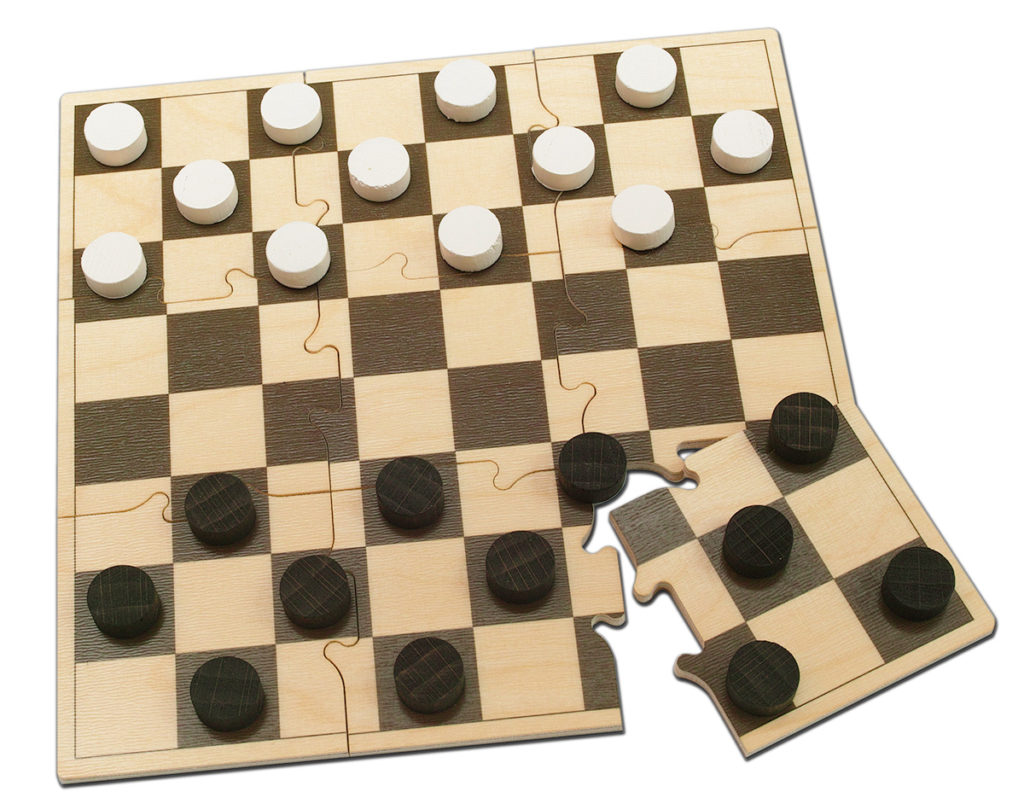Rules of play for Draughts

Draughts is played on a square-shaped game board with alternating white and black squares. In many countries including Germany, Austria and Switzerland, the board has 8×8 squares. It is similar to a chess board although the squares are named differently for Draughts. Internationally, the game is played on a 10×10 board (Draughts 100).
The game is played using round flat game pieces, which are black for one player and white for the other. On the 8×8 board each player has 12 pieces.
The game is only played on the black squares. The players move their pieces forwards diagonally to the next vacant square. They must jump over and capture their opponent’s pieces, landing on the adjacent unoccupied square behind (provided that this square is unoccupied). If the piece jumps onto a square from where it is possible to jump over another of the opponent’s pieces, the player continues his move. All the pieces that have been jumped over are captured and removed from the board. A player may not jump over his own pieces.
If a piece reaches the opponent’s first row, it is promoted to a King. This piece is identified as a King by placing one of the captured pieces on top of it. A King can move and jump forwards and backwards. When jumping over an opponent’s piece, the King must land on the adjacent diagonal square to the rear of the piece. If from this square the King is able to jump over another of the opponent’s pieces, then it must do so. The jumping rules also apply to single pieces, with the additional rule that the King can jump forwards and backwards over several squares. As a King must land on the square behind the captured piece, it is possible to win a final game of two Kings against a single opponent King. When a piece reaches the opponent’s first row by capturing one of the opponent’s pieces, the piece is also converted to a King in this case. The move ends when it is not possible for the promoted King to immediately capture any more of the opponent’s pieces.
Before starting the game, the pieces are arranged on the black squares of the first three rows on both sides of the board. The player with the black pieces starts. The pieces can be moved diagonally and can also capture other pieces.
The aim of the game is to prevent the opponent from being able to move and to capture or block all of the opponent’s pieces.
